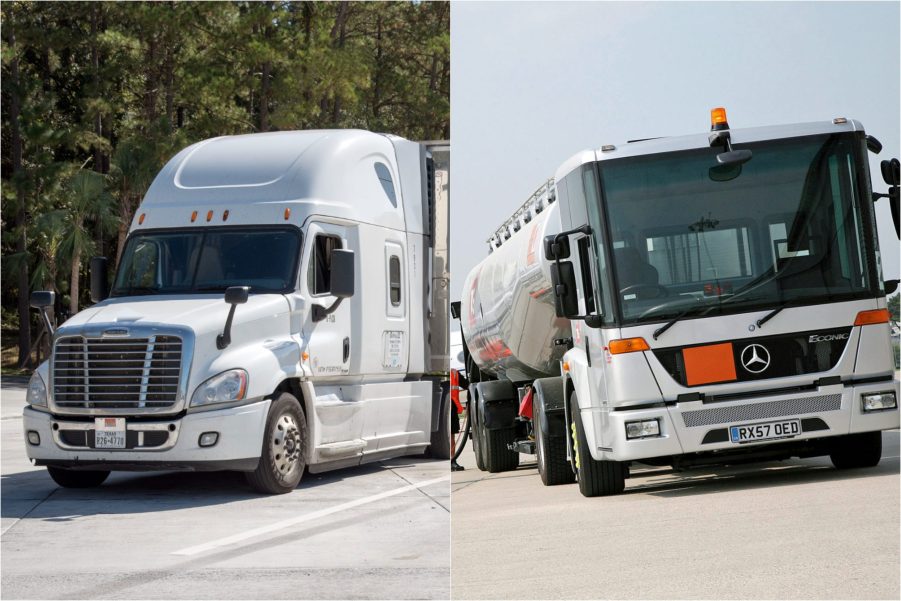
The Differences Between American and European Semi-Trucks
You don’t have to be a trucker to see the glaring differences between American semi-trucks versus European semi-trucks. Each has a distinct shape and style that serve different driving purposes. And because of differences in regulations and roads, European trucks wouldn’t work in the states, and American trucks wouldn’t work in Europe. Let’s take a look at the details and differences of semi-trucks from different parts of the world.

American semi-trucks are large, and often livable
In America, size matters, especially when it comes to semi-trucks. The bigger they are, the more they can tow, and the faster they can tow it. Not only that, but American semi-trucks often have living spaces. That conventional cabin design, where the engine is in front of the driver, allows for more room inside for sleeping space and amenities.
There are two reasons many semi-trucks have living spaces. For starters, American semi trucks tend to drive longer distances, which means stopping overnight at rest stops. But the main reasoning for having sleeping quarters is that many truckers live out of their rig. They’re called owner-operators, and get jobs as they go along a route, charting their own course until, eventually, they’re back in their home state.
And much of an American truck’s life is spent on the interstate system, where the lanes are wide and the roads are straight. For that reason, the long wheelbase of the truck is acceptable and typically makes the ride much more bearable. Considering they are allowed to drive up to 12 hours every 24 hours, whereas European truckers can only drive 9 hours, that extra comfort is important.
European trucks are smaller, and more manuverable

As mentioned earlier, stricter regulations in Europe make for different trucks. For starters, a European semi-truck can only be 18.75 meters or about 61 feet. Meanwhile, American trucks can tow multiple trailers at a time. Because of these restrictions, European trucks have to be smaller, so they can tow more cargo. Considering American cabs can be 20 feet long, that only leaves 40 feet of room for cargo.
The cab over engine design of European trucks allows for the cab itself to be less than 10 feet long. And because owner-operators are rare, and the hours on the road are shorter, European trucks don’t require large sleeper cabins or living spaces. But the shorter cabin also creates a shorter wheelbase, which improves handling.
Europe has an interstate system, but the roads are windier and the lanes are more narrow. That’s why it’s crucial that the truck can navigate skinny city streets, and a cab over design makes that possible. They also don’t need massive engines, since semi-trucks in Europe are limited to 55 mph.
The trucking industry of each region

According to Trucking, in 2019, 72% of all freight in the US was hauled on a truck. And right now, with a shortage of truck drivers, freight is being backed up at the ports. This shortage of drivers isn’t new, but with the rubber band supply and demand of the pandemic, distributors are struggling to keep up. But with this shortage, now is a better time than ever to become a truck driver, with job security and pay around $70,000 a year.
That pay rate doesn’t translate to Europe, where truck drivers are paid low wages. In fact, while their trucking industry isn’t nearly as large as the states, their shortage is. Currently, European truckers are demanding higher wages, with their salaries being around $40,000, significantly lower than the states.
So while these different regions have different trucks, they face similar troubles. With a shortage of truckers, shipping times are going up, and chances are that package you’re waiting for is stuck on a boat. So the next time you order something, no matter where you live, think of the trucker getting it to you.


